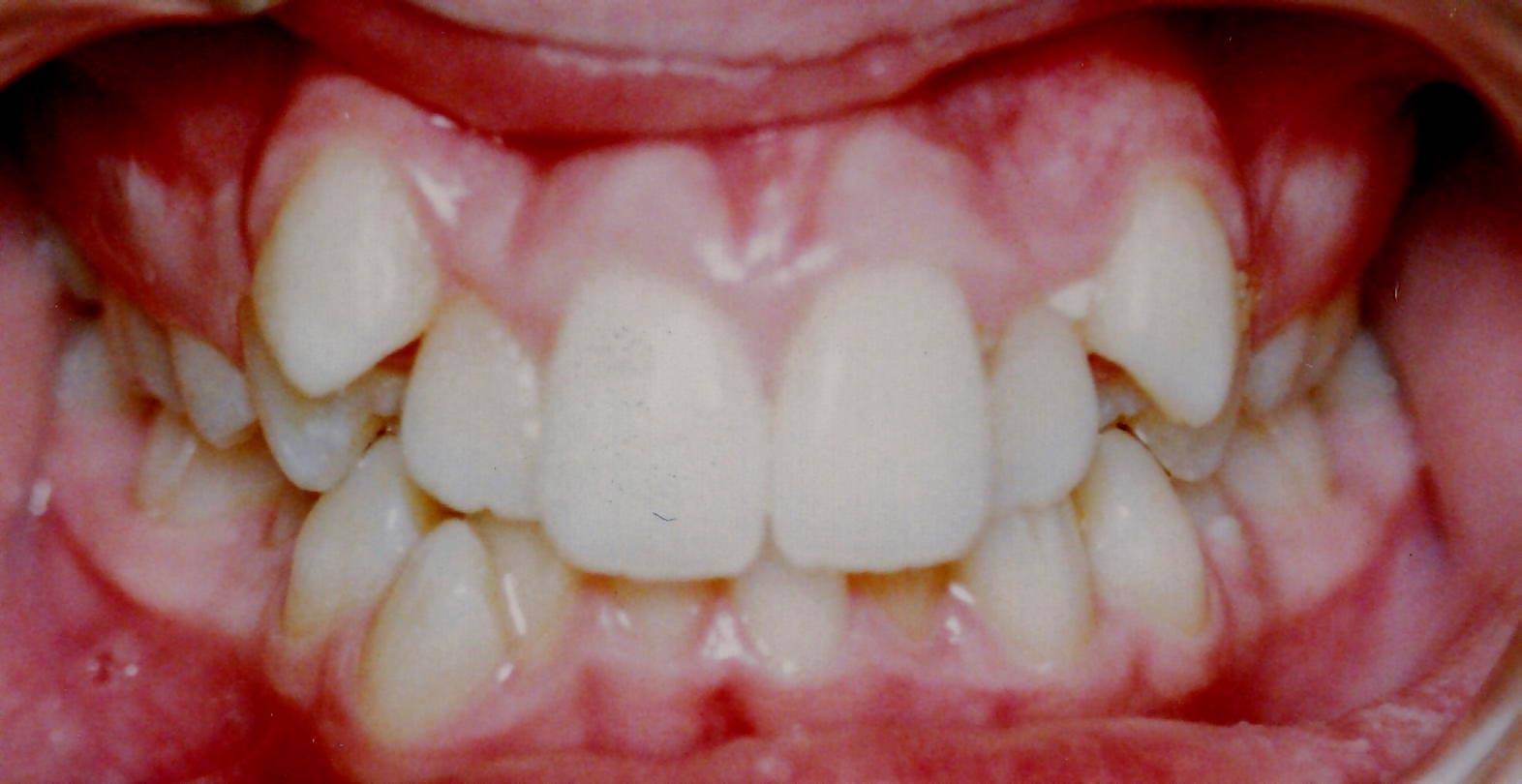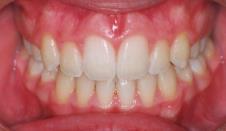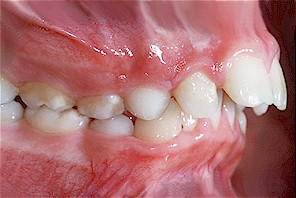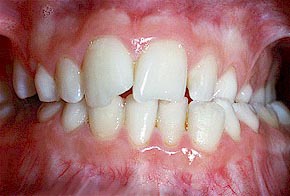Common Orthodontic Problems:
CROWDING:
Crowding of the teeth is the most common problem associated with the need for orthodontic care. Although many factors contribute to dental crowding, this problem usually stems from a discrepency between space available in each jaw and the size of the teeth. Aside from aesthetic considerations, poor alignment of teeth may be associated with periodontal problems and an increased risk of dental decay due to difficulty in maintaining proper oral hygiene.
Before
After





CLASS 11:
Class 11 problems represent abnormal bite relationships in which the upper jaw and teeth project ahead of the lower jaw (called "overjet"). Class 11 patients usually exhibit a convex facial profile with a deficient chin prominence. Typically, a Class 11 problem is inherited and results in a shorter than normal lower jaw. Other factors, such as persistent thumbsucking can aggrevate these problems. Treatment of this disorder is often commenced before all the permanent teeth have erupted to enable modification of growth.
CLASS 111:
Class 111 problems are also primarily genetic in origin. In this instance, the lower jaw and teeth are displaced to the front of the upper jaw structures. Facially, the appearance may give the impression that the lower jaw is excessively large, but in many cases the lack of upper jaw development is at fault.
DEEP INCISOR OVERBITE:
Excessive vertical overlap of the incisor teeth (called "overbite") is generally found in association with a discrepency between the length of the upper and lower jaws. It usually results in excessive eruption of either the upper or lower incisors or both. Associated problems include: 1) excessive display of gum tissue, 2) lip protrusion or entrapment, 3) biting of the roof of the mouth, and 4) incisor wear.
OPENBITE:
A lack of vertical overlap of the incisor teeth can usually be traced to jaw disharmony or persistent habits (i.e. digit sucking habits and posturing of the tongue between the front teeth) or excessive vertical growth of one or both jaws. Early assessment and intervention with these disorders is critical to the overall success.
POSTERIOR CROSSBITE:
Posterior crossbites usually result from a constricted upper jaw or unusually wide lower jaw. A narrow upper jaw will often force a patient to move their lower jaw forward or to the side when closing into a stable bite. When closed into this position, the lower teeth are located outside the upper teeth. This posturing may result in an incorrect functional position of the lower jaw with accompanying facial asymmetry.
werribee dental clinic
